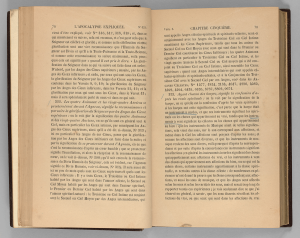Emanuel Swedenborg (1688-1772)
Famous scientist and renowned philosopher, Emanuel Swedenborg had mystical experiences from 1743 onward, during which he claimed to have visited heaven and planets, hell and paradise, where God allowed him to converse with the angels.
In his writings he claimed that they are beings of ineffable beauty, with human appearance and clothing. They possess five senses, understanding and volition, and all things human. Angels, said Swedenborg, are men like men in the world. They live like men through the heart and breath, like them, they feel, think, act and speak.1 In general, he said, everything that appears in heaven is like all that exists in the natural world and its three kingdoms. 2
Likewise Philippe Smit, a convinced Swedenborgian, did not hesitate to represent angels in an earthly setting, devoted to human activities, yet detached from lowly contingencies. In this way, he sought to construct an iconography which reflected his religious commitment.
1. See Swedenborg, Emanuel, Angelic wisdom concerning the divine love and the divine wisdom / translated from the Latin of Emanuel Swedenborg, Boston: O. Clapp, 1847, n° 176 and Swedenborg, Emanuel, Heaven and Its Wonders and Hell, From Things Heard and Seen, translated from the original Latin by John C. Ager, standard edition, West Chester, PA: Swedenborg Foundation, 2009, n° 414. 2. See Swedenborg, Emanuel, The Apocalypse explained according to the spiritual sense, …, New York: American Swedenborg Printing and publishing Society, 1908, vol. 5, n° 926 and Swedenborg, Emanuel, Of the New Jerusalem and its heavenly doctrine, as revealed from heaven, Boston: O. Clapp [1838], n°7.
See also Wikipedia
